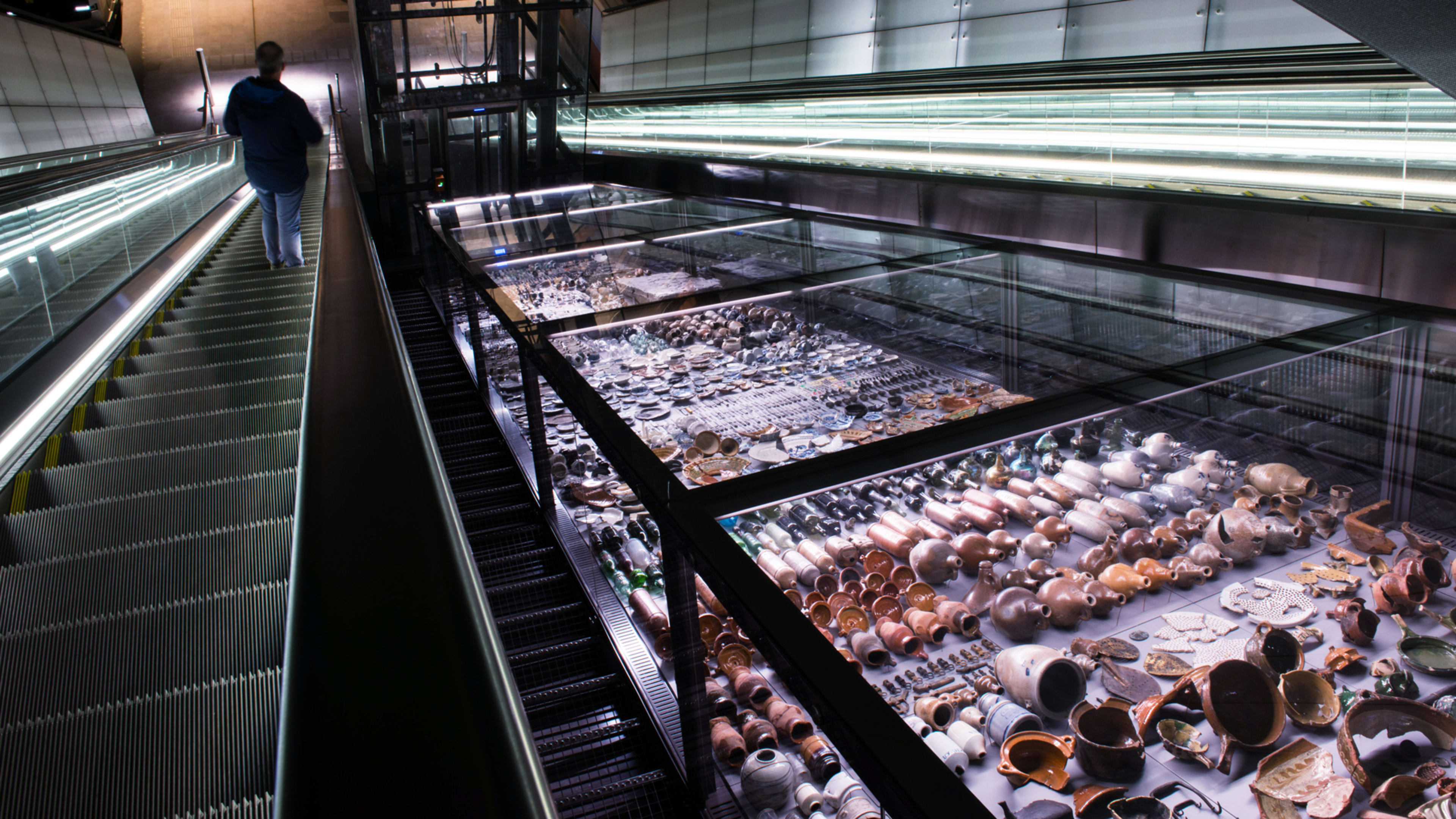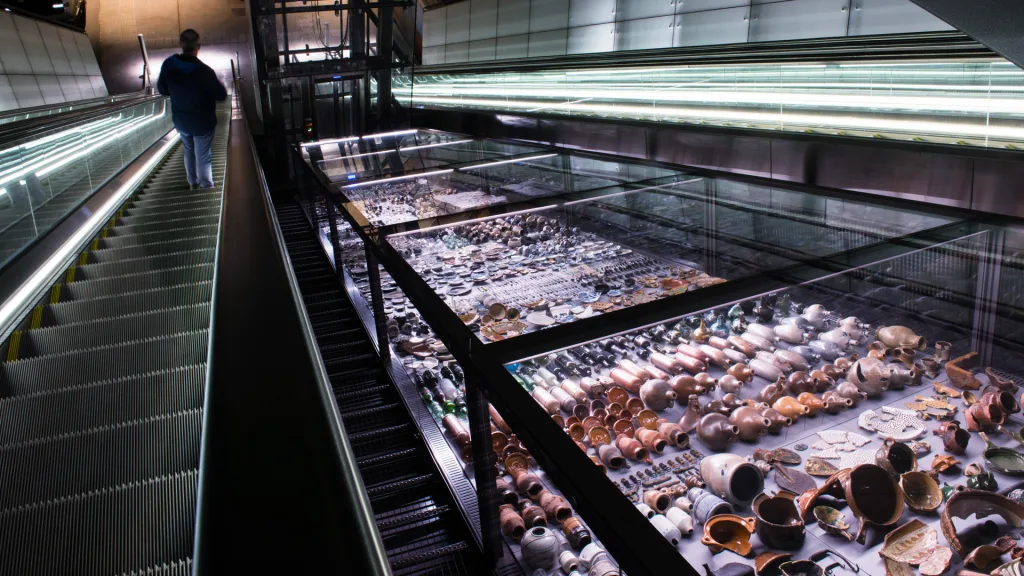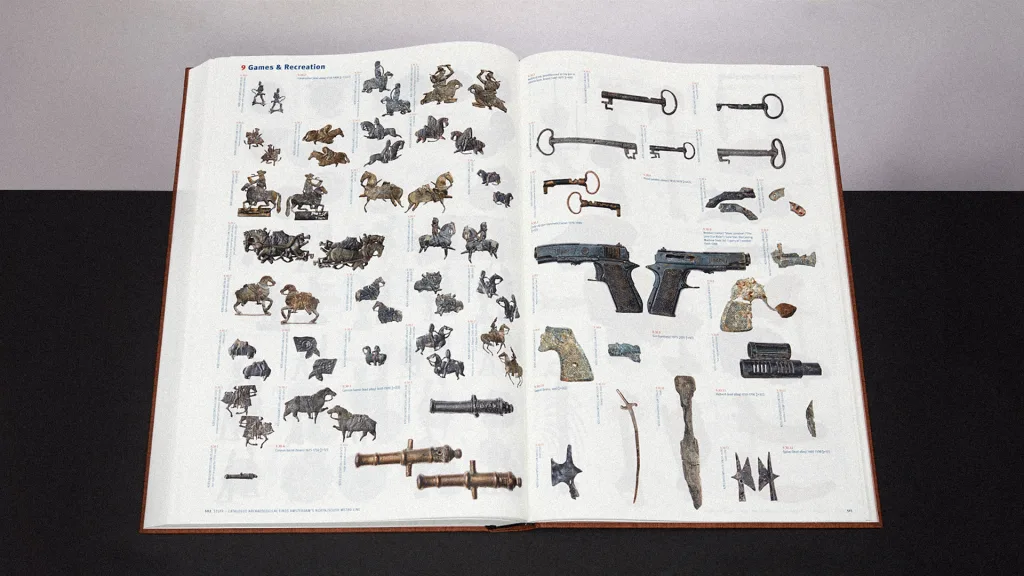Humans have been tossing stuff into rivers for thousands of years, whether it’s trash, wished-upon coins, lost items, or dramatically dumped, once-significant objects. That makes the river bed into a microcosm of human history and the development of cities–and a rich source for archaeologists.
A 15-year project to excavate two locations in Amsterdam’s river Amstel, one in the city center and one at the river’s mouth, is currently reaching its conclusion. Prompted by a complex civil engineering project–a north-south metro line that goes underneath the river–archaeologists got the go-ahead to dig two immense holes, each about 100 feet deep, and excavate whatever they could. The fruits of the project, called Below the Surface, are now online, with an interactive photo catalog designed by Netherlands-based firm Fabrique showcasing 20,000 objects uncovered beneath the project. The items range from 1980s cell phones, contemporary ID cards, and a plastic camera film case, to centuries-old coins, pottery, and fishhooks. And that’s just a small fraction of the 700,000 items they found in these two small cross-sections of the riverbed.
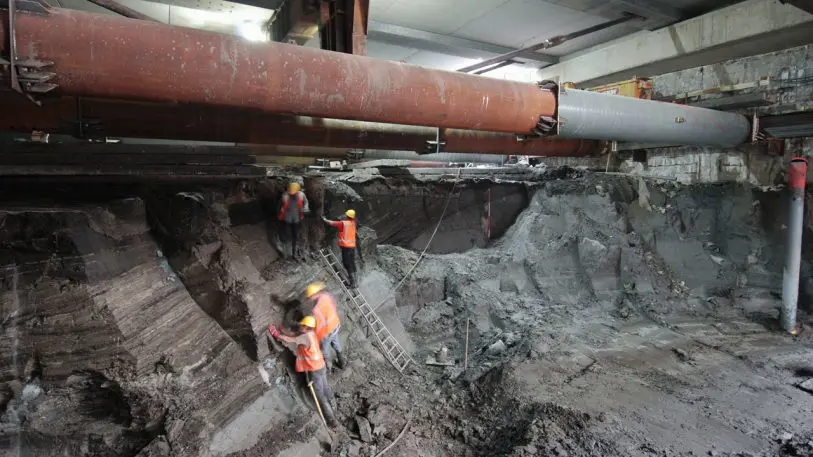
Below the Surface isn’t just remarkable for the sheer amount of stuff the archaeologists dredged up, though. It unites the study of the past, often relegated to museums and books, with contemporary thinking on communication design. And well-crafted UX ties the project together: Each element, from the website to the exhibitions to a book about the found objects, is focused on making Amsterdam’s material history relevant to today’s city dwellers.

As you scroll through the catalog and click on various objects, the site invites you to create your own display and save the objects you find most interesting. It’s a way of letting people personalize their relationship to all this old stuff, with a nod to another of the project’s public-facing representations: Two display cases in two subway stations where 10,000 found objects are arranged side by side and viewers are invited to make connections between them.
“That’s a new way of rendering archaeology to the people,” says Jerzy Gawronski, the head of the city’s department of archaeology and monuments and a professor of archaeology at the University of Amsterdam, particularly in contrast to more research-oriented modes of the science, which don’t focus on imagery or making findings accessible.
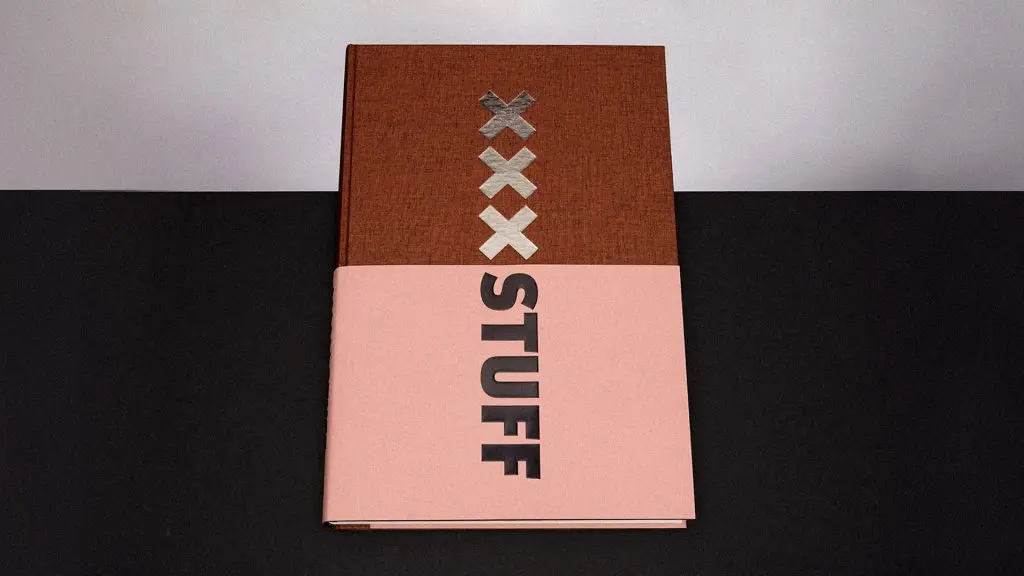
The team also published a book that organizes Amsterdam’s material history into thematic categories like architecture, interiors, science and technology, recreation, food, and more. The chapter on transportation, for instance, places pieces of motorcycles, cars, and ships next to a bone fragment from a horse. Gawronski explains that typical archaeological catalogs would never situate animal bones next to modern modes of transport–they’d be with the other animal bones. The science and technology chapter includes a piece of a calculator and a counting stick from centuries before, both likely employed to similar ends.
Communication is one of the more interesting categories. It includes old-school phones from the 1930s, letters imprinted on a wax tablet from the 1400s, and something a bit more recent–a Nokia cell phone from the 1980s. A few decades later, it’s already a piece of history. “If you show it to a kid now, they’d say this not a phone,” Gawronski says. “That, for me, is a fascinating thing with recent objects, where they are already transformed into antiquity.”

But the objects don’t just reflect our current time. In the consumption chapter, you can see a variety of types of porcelain, which can be dated to the 17th and 18th centuries when Amsterdam was a center of trade. The shards can be traced to various sources around Europe, particularly Germany. “You can reconstruct behavior in the city, or systems of exchange and transport,” Gawronski says. “Ceramics is one of the main ways to do that trick. We have a chronology of all the different types indicating all the different trade connections with different regions in Germany in different times.”
All this is just in time for the opening of the new metro line later this month. And next year, the project will finally wrap–the last step, Gawronski says, is to publish a second book that tells some of these stories about the materials and explores larger trends in what the archaeologists uncovered.
Gawronski has found that drawing connections through time makes archaeology far more interesting and relevant to the people of Amsterdam–the mandate of this project. So far, it’s working: He says that since the website launched a few weeks ago, they’ve already had 13 million visitors. Below the Surface is a reminder of the dense layers of human history buried around us . . . and how, with each new thing we buy, we’re slowly making more.
Recognize your brand’s excellence by applying to this year’s Brands That Matter Awards before the early-rate deadline, May 3.
